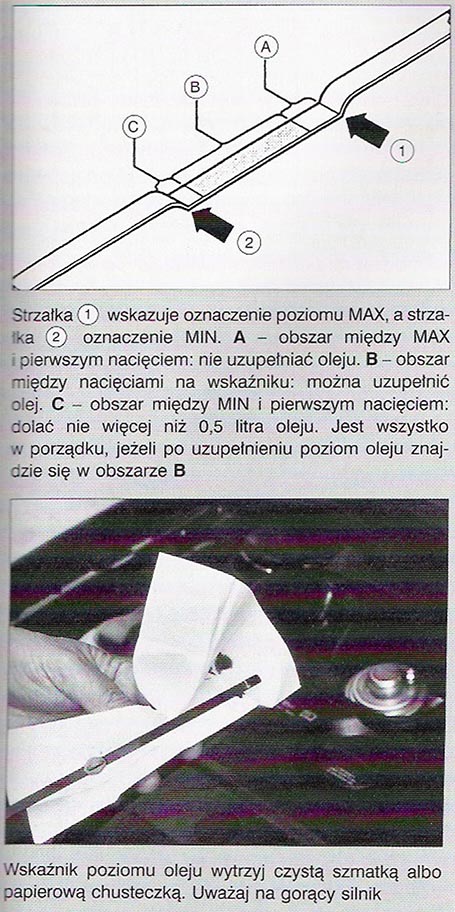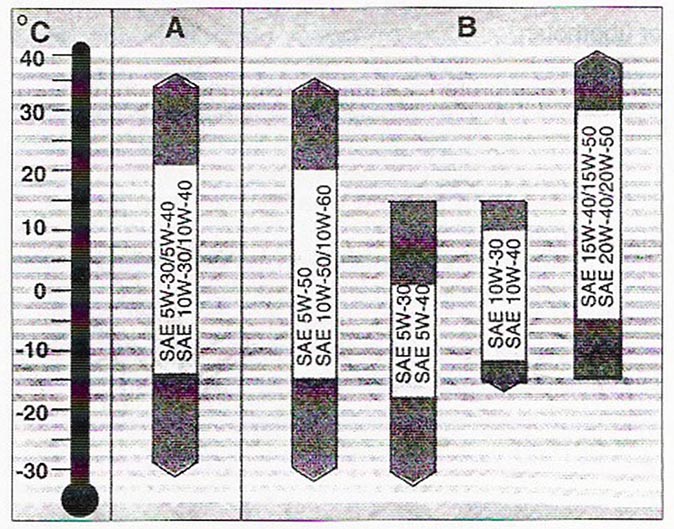Oil and oil filter change
Oil should be changed every time in all engines 15 000 km or once a year. if you travel a lot over long distances you don't have to strictly follow this rule, if, on the other hand, you drive mainly around the city, change the oil even more often. Intensive winter driving qualifies the oil to be changed after just four months.
Do you change the oil yourself?
It is worth doing only then, when you use cheaper oil, bought in an automotive store, department store or gas station. You need time to change the oil and filter yourself, because you have to lift and prop the car. It is faster and easier to do this at a gas station with an oil suction device. However, this has a significant disadvantage: impurities stuck in the oil pan remain there and changing the oil itself without a filter then makes little sense. Changing the oil in the workshop costs much more, because they use the most expensive brands of oil there. It is true that an oil change at a gas station is associated with the purchase of oil, but you have the option to choose from different brands.
The amount of oil needed to change (with filter)
Engine – Oil quantity (with filter)
Four-cylinder petrol 1,4 – 3,5 liter of oil (with filter)
Four-cylinder petrol 1,6 – 4,5 liter of oil (with filter)
Four-cylinder petrol 1.8 – 4,5 liter of oil (with filter)
Four-cylinder petrol 2.0 – 4.0 liter of oil (with filter)
Four-cylinder petrol 2.3 – 4,0 liter of oil (with filter)
Six-cylinder gasoline engine 2.8 – 5,5 liter of oil (with filter)
Four cylinder 1,9 TDI (90 KM) – 4,5 liter of oil (with filter)
Four cylinder 1,9 TDI (110 KM) – 4,5 liter of oil (with filter)
Oil filters are tailored to the individual engines. When purchasing, demand a filter designed for your engine.
 Steps to replace:
Steps to replace:
1.Warm up the engine so that the contaminants flow out more easily with the oil.
2. Place the car on a level surface or lift and secure the front of the vehicle.
3. Remove the noise suppression cover (steps in the previous article).
4. Place a flat tray under the oil pan, a pan or a cut oil container with sufficient capacity.
5. Use a socket wrench to unscrew the drain plug and drain the oil into a container. attention! The oil is hot.
The drain plug is easier to unscrew with a ring spanner. The plug can only be accessed after the noise-suppression cover has been removed.
6. If the front of the car was raised, leave him, so that all the oil can run off. Make sure that the oil drain pan does not tip over.
7. Unscrew the filter with a special wrench (in gasoline engines it is a band, and in the diesel key VW 3417). If the attempt is unsuccessful, then pierce the filter housing with a screwdriver (watch out for hot oil!) and twist it to unscrew the filter. The used filter and the oil container are waste that requires disposal.
8. Coat the filter sealing ring with grease and hand-tighten the filter.
9. Clean the oil drain plug and screw it into the pan hole, using a new gasket. Do not tighten the cap tightly (40 Nm on gasoline engines, 30 Nm on diesels), in order not to damage the thread in the oil pan bore.
10. Pour in new oil and run the engine for a while. Until the oil pump fills the filter and creates the correct pressure in the system, as long as the oil pressure indicator light is on. Note on turbocharged engines: Until the oil pressure warning light goes out, the engine can only run at idle speed. Rapid depressing the accelerator pedal can severely damage the turbocharger.
11. Check, that oil is not leaking from under the drain plug and filter.
Old oil, oil filter and oil-soiled rags left behind, spilled or thrown into garbage irreversibly destroy the natural environment. The oil should be taken to a point dealing with its utilization or regeneration.


 VW recommendations for oil viscosity.
VW recommendations for oil viscosity. Concepts and standards for automotive oils:
Concepts and standards for automotive oils: